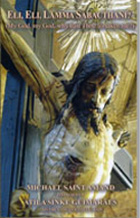Catholic Virtues
 |
 |
 |
 |
 |
 |
 |
The Penitential Psalms - III
Lent: Public Sinners Comes to
Church to Make Penance
After this marvelous chant and ceremony for Ash Wednesday, we should consider the long life of the Church and the times long ago when this liturgy was established and its repercussions in that world. This will help us to fully understand what the Church did and intended to do in the past on Ash Wednesday. Then we will better understand how distant today’s world is from the Catholic spirit.
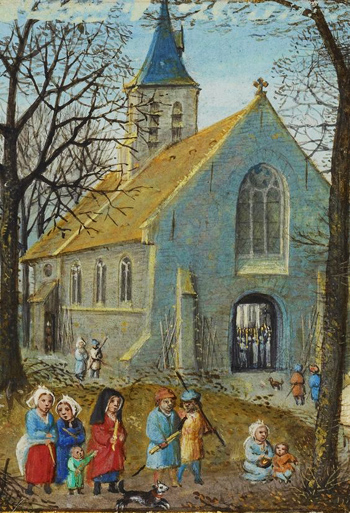 The Ash Wednesday ceremony opens Lent. But on this Wednesday, what is the atmosphere in the city of São Paulo? The same as every other day of the year... And it will not differ significantly from the miserable atmosphere of the Carnival Days. This is the reality.
The Ash Wednesday ceremony opens Lent. But on this Wednesday, what is the atmosphere in the city of São Paulo? The same as every other day of the year... And it will not differ significantly from the miserable atmosphere of the Carnival Days. This is the reality.
Will sinners be less numerous than in the Middle Ages, in those happy times when this ceremony was born and established? Not at all. On the contrary, the number of sinners has grown enormously. They have become the majority, the immense and boastful majority of the population, the domineering and derogatory majority that looks disdainfully on the man who lives according to God's law and persecutes him.
In so many, many churches, in all of those penetrated by the Conciliar Reform, what is happening? What is the atmosphere? How is sin dealt with? How is sin indicted? What is said in these churches to help the sinner so that he will fall into himself and repent of the evil he has done? Is there anything?
Everything that takes place inside these churches seems as if it would intend to give the sinner the idea that he can continue in sin because it is not that important.
This spirit is habitually apparent on Sundays: The ladies in the churches are dressed against the laws of modesty and the men against every law of dignity and gravity. Many of them are known to one another and it is also known how they live. The Communion bell rings, and the Bread of Angels will be distributed. Almost everyone in the church approaches to take Communion. Will they be Angels? It is not likely. Rather, it is the case to ask: If they are angels, which angels?
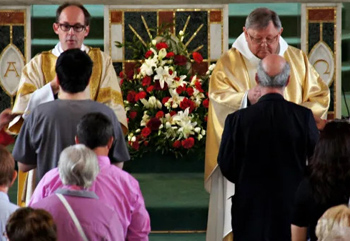 Following that sad ritual, each one receives the Host in his hand, and then places It in his mouth. They take Communion and then return home, resuming their life of sin...
Following that sad ritual, each one receives the Host in his hand, and then places It in his mouth. They take Communion and then return home, resuming their life of sin...
This world of the huge Babylonian cities is built directly on the denial of the gravity of sin, the denial of the very concept of sin.
If it were just denial, but it is more, it is a complete inversion of the good order. Virtue is despised, ridiculed, persecuted; sin is not only admitted, it is glorified. This is what has happened to sin.
In these miserable conditions, how can one imagine that this music and ceremony, so well sung and so solemn, could be suitable for such a population?
Huge cities, where churches represent small physical units in the colossal space occupied by so many other buildings that have so many other purposes. Cities sadly proud and domineering because of their riches or cities oppressed by the misery of some of their poor neighborhoods – in either case, cities that rarely think about God.
Catholic liturgy & the life of the city
This liturgy took on its definitive form, like much of the liturgy, most probably in the Middle Ages. Something was added in the first centuries of modern times, and then almost nothing else was added.
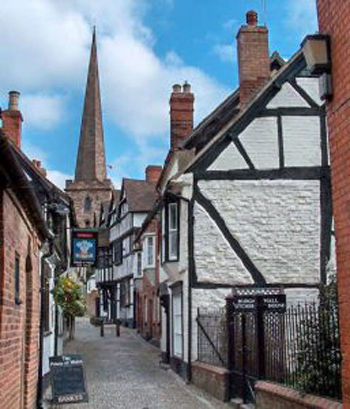
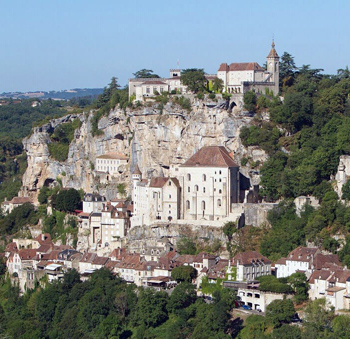
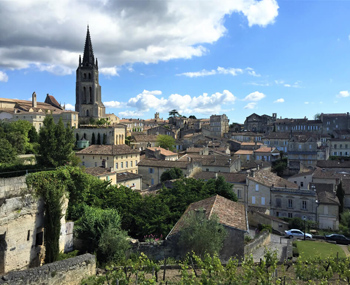 What were cities of that time like? Let us consider a medieval city. Let us think about the medieval paintings, illuminations and parchments that show us these cities. They were small cities with narrow streets, forced to fit within necessarily circumscribed walls that defended its inhabitants against night attacks. Small cities where the houses were grouped together, like people sitting snugly in an auditorium too small for them...
What were cities of that time like? Let us consider a medieval city. Let us think about the medieval paintings, illuminations and parchments that show us these cities. They were small cities with narrow streets, forced to fit within necessarily circumscribed walls that defended its inhabitants against night attacks. Small cities where the houses were grouped together, like people sitting snugly in an auditorium too small for them...
Those small towns lived their entire lives around the Church. We look at a medieval illustration and see the principle edifice, a huge arrow hovering in the air: It is a tower, or perhaps two towers; it is the church bell tower. Around it flows the city.
Sometimes there are several bell towers, several churches, several abbeys, several monasteries. The population groups itself around these monasteries. The great edifices are not the 80-story buildings built to honor Mammon so that man can later enjoy the favors of Bios. No, they are buildings made for the worship of God. Everything revolves around them.
What happens inside the church is, therefore, central to the life of the city. And a religious ceremony is not something that takes place as it does today. Today in the church there is a religious ceremony, next door there is an auction; further on is an emergency room receiving injured people; even further there is an immoral house with its execrable entertainment…
No, the center of life in the medieval town was the church, the parish. And what happened inside the church – to which the entire population use to flock – was the center of the city's life.
And what did happen inside the church? The public sinners would come to the Church on Ash Wednesday to submit themselves to the 40 days of penance of Lent or Quadragesima. It was a time of repentance to prepare men to participate with compunction in the ceremonies that would commemorate the sacred Death of Our Lord Jesus Christ, and then His glorious Resurrection.
So, men prepared for this with 40 days of ceremonies, which reminded them of the 40 days Our Lord fasted in the desert. For these 40 days men were invited to these ceremonies; the entire population went, including the public sinners.
The various sinners doing penance
What did the population think of these public sinners? What is a public sinner? It is the man who commits sins that are notorious before the city.
A man who killed someone during the year and did not repent of his sin, who was not seen in confession or receiving the sacraments; rather he was seen enjoying the victim's money that he stole. Then there is is another man who publicly blasphemed against God and the Church, who was reprimanded by the Bishop but still did not repent and continued his blasphemies. Or another man or family who publicly – in full view of everyone – stopped attending Mass. Those who are publicly and notoriously in a state of sin, these are public sinners.
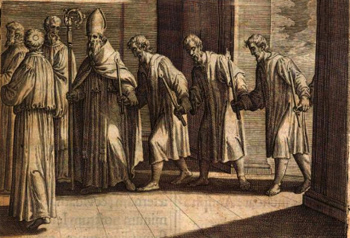 Now then, what does public opinion in this city think of them? In the Middle Ages, they were considered sinners and, therefore, they were miserable! They were highly censurable, and one should maintain a distance from them. The upright man should not live with the sinner.
Now then, what does public opinion in this city think of them? In the Middle Ages, they were considered sinners and, therefore, they were miserable! They were highly censurable, and one should maintain a distance from them. The upright man should not live with the sinner.
And if one had to deal with the sinner, he would be distant and cold because that man was in a state of sin. He was the enemy of God, and so he was the enemy of the human race. He was considered every man's enemy, and every man must treat him as an enemy … so long as he did not do penance.
These sinners also attended the ceremonies because everyone went to them. But many of these same sinners who went to publicly acknowledge their sins, realized that they were sinning, that they were on the bad path. Their sins weighed on them, but not enough for them to abandon sin. Nonetheless, they were sorry to sin and were ashamed of the sins they committed.
Then there were other sinners who also denounced themselves in those ceremonies. Those were men who were sometimes even considered very virtuous, but who suddenly stood up and declared publicly: I committed a sin!
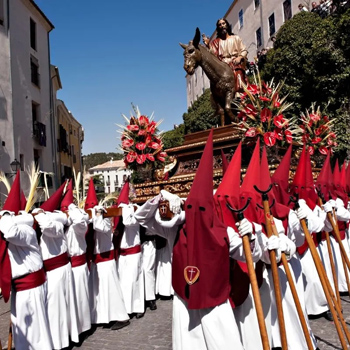 That apparently virtuous man, that virtuous woman, placed himself there among the sinners, accusing himself of a sin he committed. And because he was the object of an honor to which he had no right, now he was sorry, he wanted to receive the contempt he deserved and rejected the honor he stole by his hypocrisy, pretending to be a good person when he was not. That man or woman was also there among the public sinners.
That apparently virtuous man, that virtuous woman, placed himself there among the sinners, accusing himself of a sin he committed. And because he was the object of an honor to which he had no right, now he was sorry, he wanted to receive the contempt he deserved and rejected the honor he stole by his hypocrisy, pretending to be a good person when he was not. That man or woman was also there among the public sinners.
Were only public sinners there? What about the private sinner, who had committed sins during the year, who had confessed them well, badly or not at all? The sinner whose sin no one knew, but God knew he was a sinner, and he would be there also at the hour when penance began – penance but at the same time pardon for all the sins.
Try to imagine the state of spirit of one of these public sinners who would declare himself as such before all... They were walking down the street to the church, along with the innocent people. They were seeing from afar the imposing façade of the church, with its Saints and Angels, an image of the Crucified Christ or of Our Lord in an act of blessing; or a statue of the Virgin of virgins, conceived without original sin, the stained glass windows…
Continued


Medieval villagers walking to church
Will sinners be less numerous than in the Middle Ages, in those happy times when this ceremony was born and established? Not at all. On the contrary, the number of sinners has grown enormously. They have become the majority, the immense and boastful majority of the population, the domineering and derogatory majority that looks disdainfully on the man who lives according to God's law and persecutes him.
In so many, many churches, in all of those penetrated by the Conciliar Reform, what is happening? What is the atmosphere? How is sin dealt with? How is sin indicted? What is said in these churches to help the sinner so that he will fall into himself and repent of the evil he has done? Is there anything?
Everything that takes place inside these churches seems as if it would intend to give the sinner the idea that he can continue in sin because it is not that important.
This spirit is habitually apparent on Sundays: The ladies in the churches are dressed against the laws of modesty and the men against every law of dignity and gravity. Many of them are known to one another and it is also known how they live. The Communion bell rings, and the Bread of Angels will be distributed. Almost everyone in the church approaches to take Communion. Will they be Angels? It is not likely. Rather, it is the case to ask: If they are angels, which angels?

Today all the parishioners line up
to receive Communion in the hand
This world of the huge Babylonian cities is built directly on the denial of the gravity of sin, the denial of the very concept of sin.
If it were just denial, but it is more, it is a complete inversion of the good order. Virtue is despised, ridiculed, persecuted; sin is not only admitted, it is glorified. This is what has happened to sin.
In these miserable conditions, how can one imagine that this music and ceremony, so well sung and so solemn, could be suitable for such a population?
Huge cities, where churches represent small physical units in the colossal space occupied by so many other buildings that have so many other purposes. Cities sadly proud and domineering because of their riches or cities oppressed by the misery of some of their poor neighborhoods – in either case, cities that rarely think about God.
Catholic liturgy & the life of the city
This liturgy took on its definitive form, like much of the liturgy, most probably in the Middle Ages. Something was added in the first centuries of modern times, and then almost nothing else was added.

The church tower rises above the houses in the village in Herefordshire; below, the walled medieval cities of Rocamadour & Saint-Emilion, France


Those small towns lived their entire lives around the Church. We look at a medieval illustration and see the principle edifice, a huge arrow hovering in the air: It is a tower, or perhaps two towers; it is the church bell tower. Around it flows the city.
Sometimes there are several bell towers, several churches, several abbeys, several monasteries. The population groups itself around these monasteries. The great edifices are not the 80-story buildings built to honor Mammon so that man can later enjoy the favors of Bios. No, they are buildings made for the worship of God. Everything revolves around them.
What happens inside the church is, therefore, central to the life of the city. And a religious ceremony is not something that takes place as it does today. Today in the church there is a religious ceremony, next door there is an auction; further on is an emergency room receiving injured people; even further there is an immoral house with its execrable entertainment…
No, the center of life in the medieval town was the church, the parish. And what happened inside the church – to which the entire population use to flock – was the center of the city's life.
And what did happen inside the church? The public sinners would come to the Church on Ash Wednesday to submit themselves to the 40 days of penance of Lent or Quadragesima. It was a time of repentance to prepare men to participate with compunction in the ceremonies that would commemorate the sacred Death of Our Lord Jesus Christ, and then His glorious Resurrection.
So, men prepared for this with 40 days of ceremonies, which reminded them of the 40 days Our Lord fasted in the desert. For these 40 days men were invited to these ceremonies; the entire population went, including the public sinners.
The various sinners doing penance
What did the population think of these public sinners? What is a public sinner? It is the man who commits sins that are notorious before the city.
A man who killed someone during the year and did not repent of his sin, who was not seen in confession or receiving the sacraments; rather he was seen enjoying the victim's money that he stole. Then there is is another man who publicly blasphemed against God and the Church, who was reprimanded by the Bishop but still did not repent and continued his blasphemies. Or another man or family who publicly – in full view of everyone – stopped attending Mass. Those who are publicly and notoriously in a state of sin, these are public sinners.

The Bishop leads public sinners into the Church on Ash Wednesday, 18th France
And if one had to deal with the sinner, he would be distant and cold because that man was in a state of sin. He was the enemy of God, and so he was the enemy of the human race. He was considered every man's enemy, and every man must treat him as an enemy … so long as he did not do penance.
These sinners also attended the ceremonies because everyone went to them. But many of these same sinners who went to publicly acknowledge their sins, realized that they were sinning, that they were on the bad path. Their sins weighed on them, but not enough for them to abandon sin. Nonetheless, they were sorry to sin and were ashamed of the sins they committed.
Then there were other sinners who also denounced themselves in those ceremonies. Those were men who were sometimes even considered very virtuous, but who suddenly stood up and declared publicly: I committed a sin!

Public penitents in the Holy Week processions in Seville
Were only public sinners there? What about the private sinner, who had committed sins during the year, who had confessed them well, badly or not at all? The sinner whose sin no one knew, but God knew he was a sinner, and he would be there also at the hour when penance began – penance but at the same time pardon for all the sins.
Try to imagine the state of spirit of one of these public sinners who would declare himself as such before all... They were walking down the street to the church, along with the innocent people. They were seeing from afar the imposing façade of the church, with its Saints and Angels, an image of the Crucified Christ or of Our Lord in an act of blessing; or a statue of the Virgin of virgins, conceived without original sin, the stained glass windows…
Continued

Posted February 16, 2024














